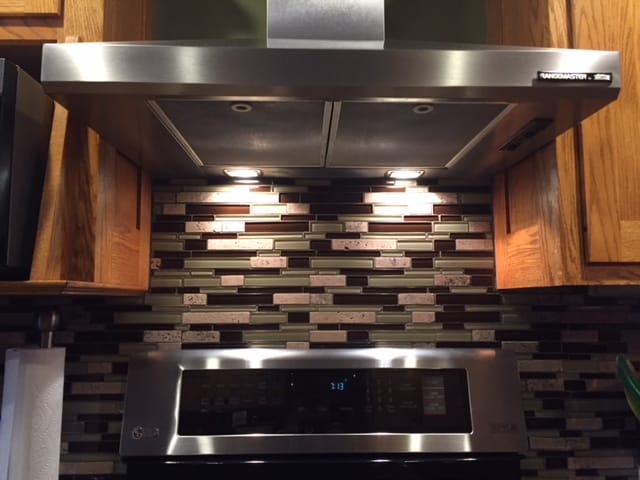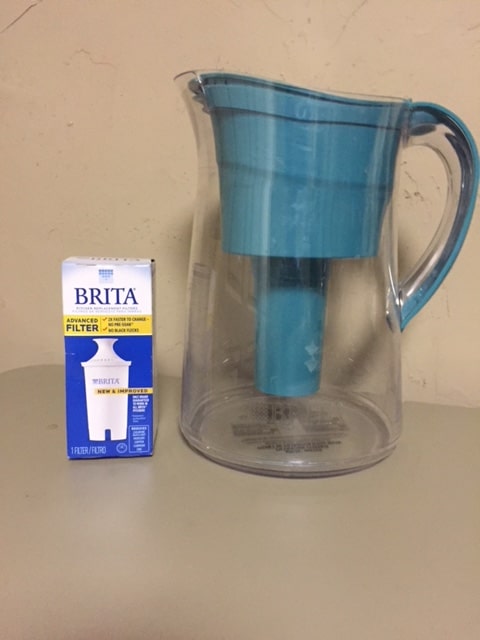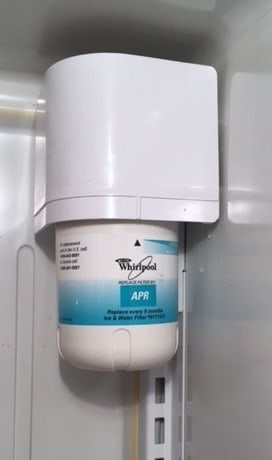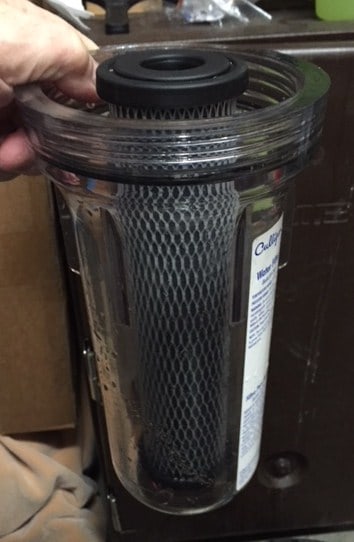Every house has its own mini-ecosystem and it’s up to you to maintain a healthy home environment. You have to keep it warm in the winter and cool in the summer. Sometimes the humidity is too high and sometimes it too dry. Then there are dust, dirt, and pollens to contend with. There are a lot of factors and household equipment that play a huge role in maintaining that balance. And that’s just dealing with the air you breathe. Don’t forget the water you use throughout your home. It may have its own issues that you will need to take care of on a routine basis too.
To keep that home ecosystem in top form does require a little effort, but that’s just part of owning your own home. Whether you’re mowing grass or washing windows or smoothing out a rutted up driveway after the spring thaw; there is always something to be done. Knowing how all the pieces interact with each other, including even the smallest pieces, and keeping them all fine-tuned, will help the process. This article will help you understand what it takes to keep your home clean and healthy throughout the year.
Most of the items I’m calling out in this article can be addressed by simply changing filters on a regular, routine basis. However, there are other things you can do to help maintain the over quality of your living spaces. Let’s take a look at some of the factors affecting your environment and some different ways you can improve the task at hand. Many of these ideas apply to individuals living in apartments too!
Factors To Consider
Table of Contents
There are many factors that can affect how much dirt, dust, and other contaminants are introduced into your home. Here are a few to help you identify when you may be more suseptable.
Geographical Location
One is your geographical location. There’s probably far less dust and pollen issues in the far northern regions of North America with permafrost, than there are in the US desert southwest. That may be a bit extreme, but I hope you get the idea.
Rural Areas
Rural living versus living in metropolitan areas each have their challenges. Rural homes can be more exposed to the dust and pollens from dirt roads and farming activity. Folks leaving the windows open to let that fresh county air in during harvest season may be getting more than they expected.
Metropolitan Areas
In contrast, the more congested metropolitan area is likely to face higher levels of smogs and vehicle emissions. The bigger the city, the worse the problem can be.
Different Seasons
The seasons play a role similar to the “permafrost” example above
Spring
Summer
In the summer the pollens continue and the dust only gets worse. The need to mow grass begins and that only magnifies the dust issues. Remember, you will be covered in the stuff!. The outdoor temperatures increase, so the windows are left open, or you close the house up and run the air conditioner, effectively circulating the stuff throughout the house.
Fall
Fall still has the dust issue and the lingering effects of pollen can be present. Raking leaves and getting the last lawn mowing done for the season are still stirring up dust. It’s starting to get cool at night, so you start running the furnace occasionally. Yep, you’re circulating the nasties more!
Winter
Finally, the snow falls and puts an end to the pollens and dust outside, however, the furnace is running full time now and re-circulating the bulk of air you breathe.
Occupation
Your occupation plays a role no matter where you live. Any dust, dirt, and contaminants that are on your clothes and body will all end up in your home at night. So keep that in mind when your children come running up to you after a long day at work!
Number Of Occupants
Did you notice I said occupants and not just people? That’s because pets play a huge role in this too. Every person going in and out of your home is tracking in dirt and dust. As mentioned earlier some are worse than others depending on where they work or what hobbies they might have.
The same can be said for pets. And that’s not just dogs and cats; it includes birds, hamsters or any other exotic pet. Also, the number of pets is a factor. Pets also have the added effect of allergies as well.
Healthier Home Filtration Needs
The first three considerations represent potential sources of contaminations that homeowners have to learn how to deal with. This particular item deals more with one of the main ways of combating the contaminants. That being what type of filter you should use in your heating and ventilation (HVAC) system.
Filters are rated using the MERV scale (Minimum Efficiency Reporting Value) that has a ranking of 1–16. The higher the MERV rating, the finer the filter elements are and the more contaminates they can take out of the air. The typical air filters used in a home with forced air heating and cooling systems have a rating of between 2 and 13.
Fiberglass Filters
The basic 1” fiberglass filters are designed for catching larger contaminants, such as hair and larger dust particles. They can have MERV ratings as low as 2”. They are designed to meet the minimum requirements to protect your heating and cooling equipment and provide maximum airflow. If someone in your home has allergies, or you have pets, this may not be your best choice.
Pleated Filters
The 1” pleated, higher efficiency air filters may be a better choice for individuals with allergies and/or pets. You can buy these filters with a MERV rating of 13 easily at most hardware and big box stores. With their finer pores, they are able to filter out more contaminates, but they tend to plug quicker restricting air flow. However by being pleated, they have more surface area, so that helps extend their life. They can be installed where fiberglass filters are used, making them a quick and inexpensive alternative.
There are also filter housings that can except larger, high-efficiency filters like the 6” AC-1 pleated filter in the photo at the top of the page. They offer the many of the same benefits as the 1” pleated filters, but they offer a much longer life.
Typical Filter Life
1” fiberglass filter: 30 days, with pets 20-30 days.
1” pleated, high efficiency: 30-60 days, with pets30-40 days.
6” pleated filter: 3-6 months, with pets 3-4 months.
These filter life recommendations are just a starting point. The life of filters can be greater or much less depending on the factors listed above. Remodeling or construction can also increase the airborne contaminants in your home. You should check your filters every 30 days until you get a feel for when you should change your filters on a routine basis. But anytime you make a significant change in your living circumstances, or change filter types, you should check your filters more frequently.
Other Home Health Factor Tools
Changing your HVAC equipment filters is a very important part of maintaining a clean and healthier home. However, it is not the only thing you can do to help the cause. You’ll want to consider all the other home appliances and equipment that can play a role and what you need to do to keep them operating efficiently.
Keep Your Floors Clean
Hard Surfaces
One of the simplest was to help improve air quality in the home is sweeping, cleaning and vacuuming your floors. On hard surfaces, your should sweep as needed to clean up dirt, dust and pet hair. If you have hardwood floors this is especially important as dirt in high traffic areas can do significant harm to the hardwood finish. It will cut years off its life leading to expensive refinishing. On hard surfaces, I would recommend using a damp mop periodically too. They do a much better job at picking up dust without causing it to become air born.
Vacuuming Carpets
Keeping your carpeted floors clean is probably even more important. Obviously, carpets can attract and hold the dirt, dust, pet dander, and pollen more than hard surfaces. That’s why it’s so important to regularly vacuum your carpets. This is especially true if anyone in your home has allergies or breathing problems.
To do this effectively you need to make sure your vacuum is maintained in top condition. Your vacuum cleaner’s brushes can get clogged up with long hair, string and things like Christmas tree tinsel. This makes them less effective at loosening the debris from the carpet, so it can be sucked up. And on vacuums with bags, as the bags get full and it can reduce the suction power, so change your bags frequently.

On many of the newer “bagless” vacuums, this is less of an issue. However, most of these types of vacuums have filters in them to help catch the finer particles. We have a Dyson DC33 and it works great. This particular model has two filters in it. These filters must be cleaned or changed on a routine basis or you will lose that all-important suction power!
We’ve also added an iRobot Roomba vacuum and a Dyson DC34 cordless handheld vacuum to our arsenal as well. Both of them do a great job at helping control dirt that gets tracked in and pet hair. We run our Roomba practically every day and it produces good results as described in our article about controlling pet hair. The handheld vacuum is great for quickly cleaning furniture and stairs.
Carpet Cleaning
We’ve just discussed how vacuuming your carpets plays a huge role in the overall air quality of your home, but a deeper cleaning at least once a year is highly recommended. Keeping your carpets clean also extend the life of your carpet by removing the abrasive dirt that can damage the fibers. Hiring a professional cleaning service may produce a good result, but will come at a cost. You can expect to pay a minimum of anywhere between $100 and $200.
There are some benefits to investing in a good quality carpet cleaner of your own. The most obvious is you can clean your carpets more frequently if required. But I believe carpet cleaners are one of the most underused tools a homeowner has. Especially if you have children or have pets in the home. Many times these cleaners set in an out of the way location waiting for their once a year use. We own a Hoover Power Scrub Deluxe and it sets right next to our Dyson waiting to spring into action. It is great for spot cleaning pet accidents, spills or even water leaks. For more information check out our article on carpet cleaners. They are a must-have for homeowners.

Fans And Vents
Range Hood
If you use your kitchen range or oven anywhere near as frequently as we do, then you’ll know why the range hood filters have made our list. They can play a significant role in maintaining a healthy home environment. With that said, if you are considering installing or upgrading your range hood I would strongly recommend putting in one that vents directly outside (ducted). No matter which type you have, keeping the filters clean is critical to their efficient operation.

Many models of hoods are not ducted outside and just re-circulate the air within the kitchen. This type of hood is typically fitted with a charcoal filter which helps catch the grease mist that is suspended in the smoke and removes some of the smoke particles from the air. In most none ducted applications I’ve seen these types hoods are no way as efficient at removing the smoke particles as the ducted hoods. They also require more frequent filter cleaning or replacement. The ducted range hoods typically have just the mesh style grease trap filters and require less frequent cleaning. Ducted range hoods can significantly improve the air quality inside the home.
Another advantage the ducted range hoods have is they can remove unwanted heat and smells from the kitchen. If you need to use the oven during the summer, running the fan helps pull the heat up and vents it directly outside. That is definitely something the non-ducted hood cannot do! Also, my wife is not a big fan of me cooking venison or fish in the house. She doesn’t like the smell. I know, I don’t get it either! Anyway, by running the fan on a ducted range hood those undesired smells can be greatly reduced and has made my life much better.
Ceiling Fans
There is other equipment in your home that plays a role in keeping your home comfortable and operating efficiently. One item is your ceiling fans. By circulating the air throughout your home you keep the temperature more consistent and it improves the heating and cooling. I clean our ceiling fans at least twice a year. Once in the spring and again in the fall. I do this when I reverse the direction of the fan’s rotation. For more comfortable temperatures, the fan should move air up in the winter and down in the summer. The downward movement creates a more noticeable breeze to the body and typically feels cooler. Not what you want in the winter months.
To clean our fans I use the battery operated, handheld vacuum, mentioned above. It works great for this. You’ll be surprised at how much dust can accumulate on moving blades! By keeping the blades and motor vents clean it will improve the efficiency and helps extend the life of your fan. The fan in our living room has run almost non-stop for the 18 years we’ve lived in our home!
Exhaust Fans
Even something as simple as your bathroom exhaust fan plays a role in your home’s environment and health. The bathroom exhaust fan’s primary role is not for removing foul smelling air, although it is very helpful in doing so. The exhaust fans primary role is to help remove excess moisture and humidity from what I lovingly call “marathon showers”! Seriously, by removing the moisture it helps prevent molds and mildews from forming. They can lead to all kinds of serious health issues.
The exhaust fans also help remove other airborne contaminants as well. And because they are moving air ladened with moisture and dust, they tend to accumulate a buildup of dirt and dust on the fan grates and blades. So similarly to the range hood, to get the maximum benefit, the bathroom exhaust fan need to be vented outside and cleaned occasionally. I usually clean ours when I clean the ceiling fans. It’s a great way to remember them.
Normal Home Equipment Maintenance Tips
Below is a list of some of the items that need to be cleaned and maintained on a routine basis as well. A few of them I have addressed specifically, but they all play a role in keeping your home clean and healthy. Be sure to check your owner’s manuals for each item and adjust the cleaning frequency, as needed.
- Vacuum: Roomba, handheld, empty waste hopper
and clean filters after each use. Clean Roomba brushes every 2 weeks and further cleaning every 1-2 months. For more information read our article on Roomba maintenance. - Dyson bagless pre-motor and post-motor filters 3-6 months. Refer to manufactures manual. Depending on the model some filters can be washed and re-used and
other have to be replaced. - Carpet Cleaner: Requires general cleaning of brushes and waste water container between each use.
- Room Air Conditioner: 1-2 months. Check your manual. Many manufacturers have reusable filters.
- Humidifiers: Evaporative mist type and whole house type. Wick filters 1-3 months. (This improves efficiency and reduces the chance of mold and mildew)
- Ceiling Fans and Exhaust fans (every 6 months, improved fan efficiency)
- Range Hoods (efficiency): every 6 months
- Clothes Dryer (Lint filter, Before each use. Also remove vent line and vacuum/clean at least once a year (improves air flow/efficiency & helps reduce fire hazard).
Water Filters
While we are making a list of items we need to change filters in, clean, and maintain, we should be sure to include water filters to the list. There are several options to choose from, so select what fits your needs and be sure to maintain them for optimum efficiency. Like air filters, water filter life can be affected by the level of contaminants and the quantity of water filtered. Be sure to check manufactures recommendations for the types of filter you may need.
Carafe Water Filter: Every 40-50 gallons. These are good for filtering out particles and minerals to improve drinking water quality. They are perfect for apartments or college dormitories.

Water Faucet Filter: Typically every 3-4 months. Offers a little more convenient method of filtering water for drinking or cooking than the carafe type filters.
Refridgerator Water Filters: Every 6 months. These filters can improve the quality of your drinking water and ice cubes.

Whole House Water Filter: 3-6 months. These filters can remove minerals and contaminants that can reduce the efficiency or shorten the life of hot water heaters, clothes washers, dishwashers, and humidifiers.

Water softeners: Require routine additions of salt (see manufacturers recommendation). Like whole house water filters, they can improve the life and efficiency of many of your home appliances. They can also remove iron and odors from the water.
In Conclusion
To maintain a clean and healthy home environment, it does require a little effort on your part. Most of the appliances and equipment in your home will help on an individual basis, but only when used properly and collectively, will you realize the greatest benefits. So know when the various filters in your home need to be cleaned or changed. Take the time to routinely clean and maintain all the tools and appliances that are used to clean your home. By doing this you’ll experience a cleaner, healthier home!
If you have any comments or questions, you can leave them in the comments section below or you can email us at [email protected]. FYI, we do not collect or share email addresses. We will only use them to reply to your comments or provide answers to your questions. We are also required to let you know that some of our links are “affiliate links”. This means if you click on a link and make a purchase, we could make a small commission, at no extra cost to you. This helps offset the cost of maintaining our website. So, if you like what you’ve seen, please be sure to give us a “Like” and “Share” on Facebook and Instagram too. Thank you for reading and good luck with all your home projects!


Thank you and I couldn’t agree more!
Thanks for the insightful article! I appreciate the tips on changing air filters regularly. In addition to this, I’ve found that using air purifiers can be a great addition to make the air in your home even cleaner. It’s all about creating a healthier living environment. 🌿🏡
Thank you. I totally agree.
Love your article! I especially liked the fact that you mentioned water fidgeters. Many people forget that even if the water seems clean, it still has some level of contaminants in it. An effective home filtration system reduces your exposure to chlorine when drinking, washing, and breathing. Less chlorine is dispersed in sinks and showers. This improves the health of your skin, hair and reduces allergies in the home.
Thank you for sharing your thoughts!
Kudos to the author for this informative piece on maintaining a healthy home environment. The article offers practical insights into factors affecting indoor air quality and provides valuable tips for various aspects of home maintenance. I appreciate the emphasis on HVAC filters and their impact on air quality. A quick note: Don’t forget to pay attention to your furnace, as it plays a crucial role in circulating clean air throughout your home. Keep up the great work!